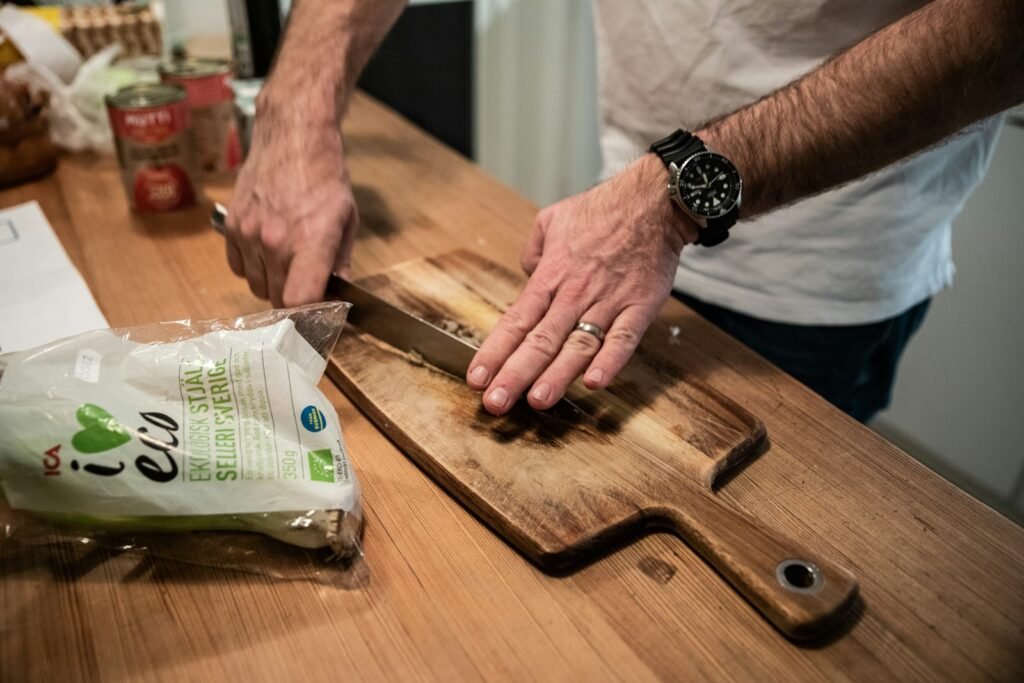A walnut chopping board is more than just a kitchen tool—it’s an investment in durability, aesthetics, and functionality. Whether you’re a home cook or a professional chef, a high-quality walnut cutting board can elevate your food preparation experience. But what makes walnut the ideal choice for a chopping board? How does it compare to other materials? And how can you properly maintain it to ensure it lasts for years?
In this guide, we’ll explore everything you need to know about walnut chopping board, from their benefits to care tips and buying considerations.
Why Choose a Walnut Chopping Board?
When it comes to cutting boards, various materials are available, including plastic, bamboo, maple, and teak. However, walnut stands out for several reasons.
Superior Durability and Hardness
Walnut is a hardwood, but it’s slightly softer than other options like maple or teak. This makes it an excellent choice for a chopping board because:
- It’s gentle on knife blades, helping to maintain their sharpness.
- It’s hard enough to resist deep knife marks and scratches, prolonging its lifespan.
Natural Antibacterial Properties
Wooden chopping boards, especially those made from walnut, have a natural ability to fight bacteria. Unlike plastic boards, which can harbor bacteria in knife grooves, walnut wood contains antimicrobial compounds that help keep your board hygienic.
Elegant Aesthetic Appeal
One of the standout features of walnut chopping boards is their rich, dark color. The deep brown hues with intricate grain patterns add a touch of sophistication to any kitchen. Over time, walnut boards develop a beautiful patina, making them even more visually appealing.
Sustainable and Eco-Friendly
Many high-quality walnut chopping boards are crafted from responsibly sourced wood. Choosing a walnut board from a reputable manufacturer ensures that you’re using a sustainable product that supports responsible forestry practices.
Types of Walnut Chopping Boards
Walnut cutting boards come in different styles and constructions, each serving unique purposes.
1. Edge Grain vs. End Grain Walnut Boards
- Edge Grain Boards: Made by gluing strips of wood together with the grain running parallel to the surface. They are durable, cost-effective, and suitable for everyday kitchen tasks.
- End Grain Boards: Crafted by arranging wood blocks so that the grain faces upward. This type is more resistant to knife marks, has a self-healing property, and is often the choice for professional chefs.
2. Walnut Butcher Block vs. Standard Cutting Board
- Walnut Butcher Block: Thicker and heavier than regular cutting boards, butcher blocks provide a sturdy and solid surface for heavy-duty chopping.
- Standard Cutting Board: Lighter and easier to move, ideal for general kitchen prep work.
3. Reversible vs. Single-Sided Boards
- Reversible Boards: These have two usable sides, extending their lifespan and offering versatility.
- Single-Sided Boards: May include juice grooves for catching liquids, making them useful for carving meats.
How to Maintain a Walnut Chopping Board
To ensure your walnut board lasts for years, proper care is essential.
Cleaning Your Walnut Cutting Board
- Hand wash only – Avoid dishwashers, as the intense heat and water exposure can warp the wood.
- Use mild dish soap and warm water, scrubbing with a sponge or soft brush.
- Avoid soaking – prolonged exposure to water can cause cracking and warping.
- Dry immediately with a clean towel and leave it upright to air dry completely.
Oiling and Conditioning
Regular oiling keeps your walnut chopping board hydrated and prevents it from drying out.
- Use food-grade mineral oil or board cream (avoid vegetable or olive oil, as they can turn rancid).
- Apply oil once a month or whenever the wood starts to look dry.
- Let the oil soak in for a few hours, then wipe off excess oil with a soft cloth.
Removing Stains and Odors
- Sprinkle coarse salt and rub it with a cut lemon to remove stains and lingering odors.
- For stubborn stains, make a paste with baking soda and water, scrub gently, then rinse and dry.
Avoiding Warping and Cracking
- Store your board in a dry, well-ventilated area.
- Avoid extreme temperature changes (don’t place a cold board near a heat source).
- Never leave your walnut board submerged in water.
How to Choose the Best Walnut Chopping Board
Size and Thickness
- Small boards (10” x 12”): Ideal for quick chopping and small kitchens.
- Medium boards (12” x 18”): A versatile size for most home cooks.
- Large boards (18” x 24”): Perfect for meal prep, carving, and serious home chefs.
A thickness of at least 1.5 inches is recommended for durability and stability.
Type of Walnut Wood
American black walnut is the most commonly used wood for cutting boards. It offers a balance of hardness, beauty, and longevity.
Additional Features
- Juice grooves – Useful for cutting meats and juicy fruits.
- Handles or grips – Make it easier to lift and carry.
- Rubber feet – Prevents slipping during use.
Final Thoughts
A walnut chopping board is a fantastic investment for any kitchen, offering beauty, durability, and knife-friendliness. With proper care, a high-quality walnut board can last a lifetime, making it a worthwhile addition to your cooking routine.
Whether you’re looking for a professional-grade end grain board or a stylish everyday cutting board, walnut is an excellent choice that blends function and elegance.
If you’re ready to upgrade your kitchen with a premium walnut chopping board, choose a sustainably sourced, well-crafted option—your knives (and your meals) will thank you!


